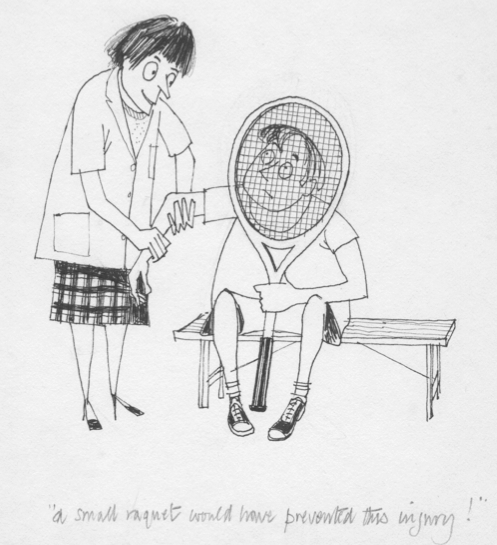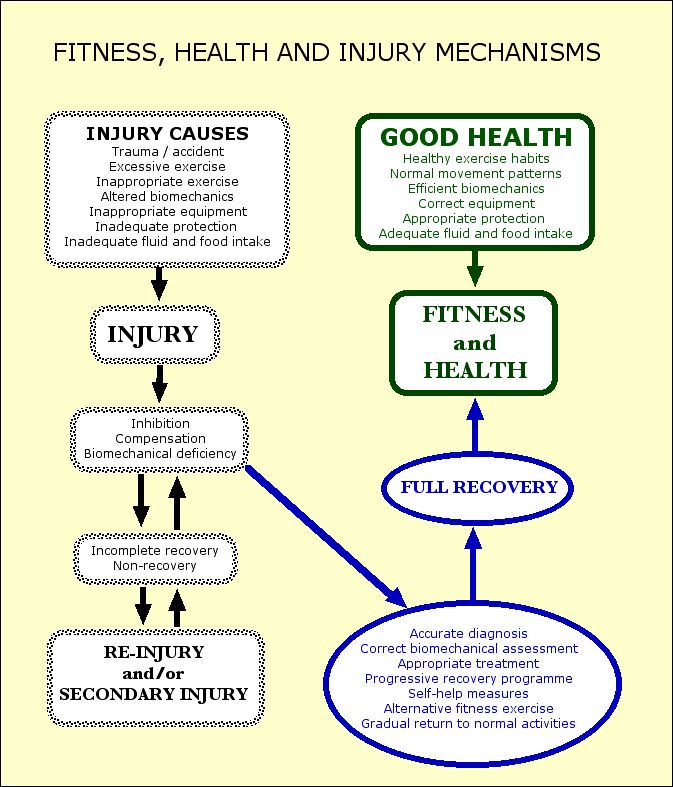Injuries can be categorized into main types according to how they happen: extrinsic, intrinsic, traumatic and overuse or misuse.
Intrinsic injuries are those which happen through overuse or misuse of the body, usually without much warning. They can be sudden and dramatic, such as rupture of the biceps tendon at the shoulder through heavy weightlifting or chopping wood, or a tear of the Achilles tendon in sports like squash and badminton. These injuries can be termed traumatic intrinsic injuries. The activity which causes the injury may be something you do rarely or often. Although they seem to happen out of the blue, there is always an underlying cause, and it’s important for recovery and prevention of re-injury to identify what that is.
Overuse intrinsic injuries come on gradually, and are almost always linked to repetitive or prolonged activity. You might feel pain immediately after the activity at first, and then notice it more and more during the activity. A slight pain may or may not develop to an unbearable level, according to the activity, tissue damage and the way you approach the problem. Examples of overuse intrinsic injuries include stress fractures, tendinitis, peritendinitis and muscle strain. Causative activities usually involve repetitive patterns of movement, as in long-distance running, swimming or rowing. More varied activities can be made dangerously repetitive, if, for instance, you do hours of practice drills or serving practice in tennis. Using the wrong type or size of equipment or inappropriate sports shoes can cause overuse / misuse injuries.

Injuries can cause different types of damage to body tissues, giving rise to a variety of symptoms: pain, bleeding, swelling, skin temperature changes, skin colour changes, and deformation of the injured part.
Pain can be deceptive. As most pain nerve endings are sited close to the body’s surface, a superficial injury can cause a surprising amount of pain, while a deep-seated injury such as cruciate ligament rupture in the centre of the knee can be virtually painless. Where you feel a pain is not necessarily a guide to which tissues, if any, might be damaged. Pain from a damaged tissue can be referred to elsewhere in the body through the nerve pathways, and this can be confusing.
Pain can happen for other reasons apart from overuse or misuse during physical activities. It can arise through different causes, including diseases such as tuberculosis or cancer, viral infections which cause muscle spasm, inflammatory conditions such as rheumatoid arthritis or gout, dietary deficiencies, problems in internal organs, hormonal disturbances, circulatory problems and many others.
You have to describe the pattern of any continuing pain in order to help identify what’s causing it. Keeping a diary of how your pain behaves, is an essential tool for differentiating injury pain from pain due to other less obvious causes. Other symptoms and problems should also be noted. Pain details should set out what kind of pain it is; when it happens; what activities cause it; whether it occurs at rest; whether it occurs according to your position, such as when you sit, stand or lie down; whether it wakes you at night; whether it occurs at night, and if so is that when you turn over, or as you lie still; and whether you can do anything to ease it.
Injuries and pain can turn into a vicious cycle of events, so you need to deal with them as soon as you know you have a problem. The first step is to take note of what your symptoms are, when they occur, and if possible what causes them, or what they are related to. A written record is most useful. If you cannot identify the cause and solve the problem yourself, you need to find the right practitioner too help you. Once you have consulted someone you trust, you must follow the advice given. If in doubt, you can always seek a second opinion, but don't mix treatments, or consult several differing practitioners without reference to each other. Always make sure you have recovered fully before going back to normal activities. Full recovery should not be a matter of guesswork: you and your practitioner should establish exactly what you can and cannot do at each stage of treatment and rehabilitation, and set out tests to lead you progressively to and through the final stage.



